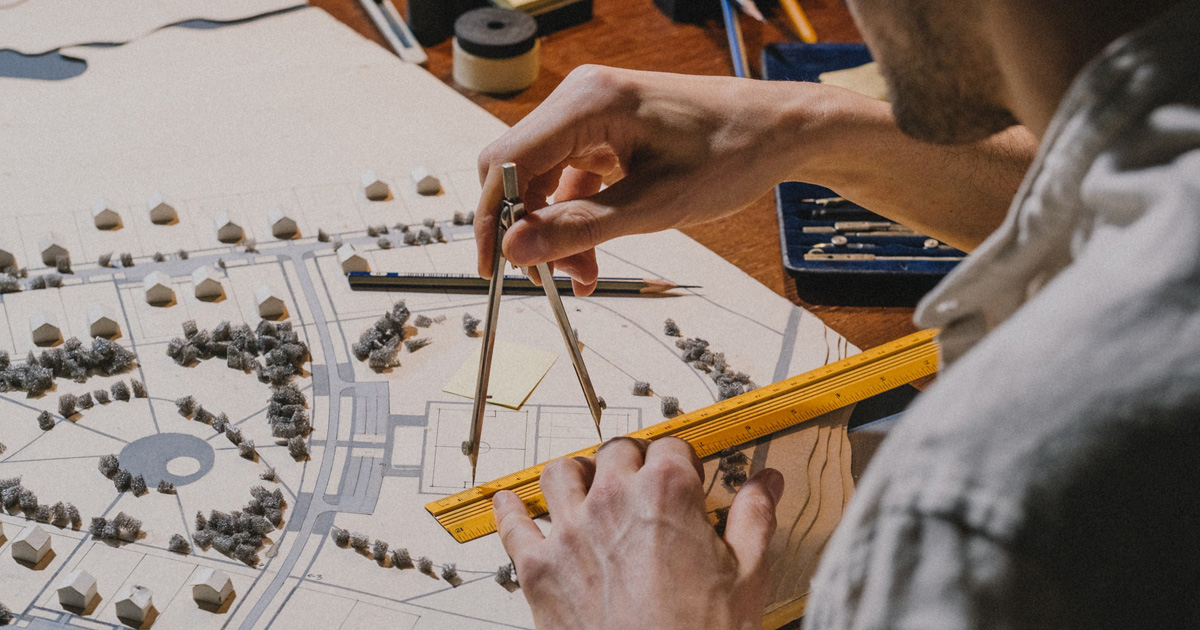Recognizing the Diverse Job Paths Available for Aspiring Architect
As an ambitious Architect, you have a globe of career courses waiting for you. Whether you're attracted to conventional architecture or the nuances of sustainable style, there's a specific niche that lines up with your passions.
Standard Style: Designing Structures and Structures
Typical style concentrates on making buildings and structures that mix functionality with aesthetic appeal. As you discover this field, you'll appreciate the complex equilibrium in between kind and function. You'll find out to attract ideas from historical styles, incorporating elements like symmetry, products, and craftsmanship. Your designs can reflect cultural heritage, showcasing neighborhood customs while satisfying modern-day requirements.
You'll establish skills in preparing, model-making, and site evaluation, allowing you to envision and connect your concepts efficiently. Involving with clients, you'll require to understand their vision and equate it right into viable styles.
In addition, constructing codes and sustainability practices are essential in your job, ensuring your structures are ecologically friendly and risk-free. As you expand in your occupation, you'll find chances in household, industrial, and even repair jobs, each offering distinct challenges. Accepting conventional style leads the way for a satisfying career that admires the past while forming the future.
Urban Preparation: Shaping Areas and Public Spaces
As a hopeful Architect, you can play a crucial role as a metropolitan planner, changing how communities work and connect. By utilizing neighborhood interaction techniques, you'll assure that locals have a voice in shaping their setting. Plus, integrating lasting style concepts will certainly assist develop rooms that not just meet today's requirements however additionally secure the future.
Duty of Urban Planners
While numerous might assume of engineers as the single enthusiasts behind structures, urban coordinators play a crucial role in forming the more comprehensive landscape of neighborhoods and public spaces. By teaming up with numerous stakeholders, you'll assist make parks, transportation systems, and household locations that advertise social communication and access. Your expertise in spatial layout and neighborhood dynamics allows you to envision future growth while maintaining social heritage.
Community Engagement Strategies
Efficient community interaction strategies are important for metropolitan organizers to assure that the voices of homeowners are listened to and valued in the preparation process. To cultivate purposeful discussion, you ought to prioritize open forums and workshops where area participants can share their concepts and issues. Use studies and social media sites to get to a wider audience, ensuring diverse perspectives are consisted of. Working together with local companies can improve depend on and promote much deeper links. It is very important to give clear info regarding decision-making processes and suggested tasks, allowing locals to feel educated and empowered. By proactively listening and incorporating responses, you'll develop rooms that reflect the area's needs, inevitably causing more successful and sustainable urban settings. Welcome transparency and continuous dialogue for enduring impact.
Lasting Style Concepts
When making city spaces, integrating sustainable layout principles is crucial for producing atmospheres that grow both environmentally and socially. Take into consideration incorporating environment-friendly areas, like gardens and parks, to improve biodiversity and enhance air top quality.
Designing with water conservation in mind is also vital-- consider rain gardens and permeable surface areas to manage stormwater. Involving area participants throughout the preparation procedure guarantees that the spaces you develop fulfill their demands and urge social interaction. By embracing these concepts, you'll add to dynamic, lasting metropolitan landscapes that profit every person.

Landscape Architecture: Developing Lasting Outdoor Settings
As you explore landscape architecture, you'll find crucial layout principles that create functional and stunning outside spaces. Sustainable techniques play an essential duty in making certain these atmospheres flourish while lessening environmental effect. And also, you'll locate a range of profession opportunities that permit you to make an actual distinction in how individuals interact with nature.
Style Concepts in Landscape
Understanding design principles in landscape style is essential for creating lasting outdoor settings that balance with nature. You'll need to ponder components like range, percentage, and balance to guarantee your designs really feel cohesive and inviting. Integrating indigenous plants not just boosts biodiversity however likewise lowers water usage, making your landscape resistant. Think of the flow of space and exactly how individuals engage with it; pathways and seating areas should invite exploration and leisure. Furthermore, take notice of seasonal changes, developing with materials that match the surroundings year-round (Architect). By prioritizing sustainability and visual appeals, you can develop exterior rooms that enhance the community and advertise health. Embracing these principles will certainly establish a strong structure for your career in landscape style.
Sustainable Practices Summary
Lasting techniques in landscape design not just concentrate on looks but also prioritize ecological health and resource preservation. By integrating indigenous plants, you improve biodiversity and decrease the need for chemical fertilizers and pesticides. Implementing reliable irrigation systems helps save water and decreases drainage, securing neighboring ecosystems. You can develop areas that promote dirt wellness, such as using organic products and practicing permaculture principles. Furthermore, including green framework, like rain yards and permeable sidewalks, aids in stormwater administration and lowers urban warmth. When you produce outdoor atmospheres with sustainability in mind, you add to a much healthier earth and offer spaces that promote area link. Inevitably, these techniques guarantee your designs benefit both individuals and the atmosphere for several years to find.
Job Opportunities Exploration
With a solid structure in lasting methods, landscape style uses a range of occupation paths that allow you to make a meaningful effect on the atmosphere. You can function as a landscape designer, developing cosmetically pleasing and useful outside areas, or focus on ecological repair, assisting to revive damaged ecological communities. Urban coordinators frequently work together with landscape engineers to develop environment-friendly spaces in urban setups, enhancing city livability. If you're passionate about education and learning, consider coming to be a landscape architecture instructor, motivating future generations. Furthermore, you may work with nonprofits concentrated on ecological sustainability or involve in research to innovate brand-new techniques. Each path not just shapes beautiful atmospheres however additionally promotes a healthier planet for future generations.
Sustainable Layout: Concentrating On Eco-Friendly Practices
As you explore your profession in design, embracing eco-friendly methods can set you apart in a competitive area. Lasting design concentrates on producing buildings that lessen environmental influence while enhancing owner wellness. By integrating sustainable materials, energy-efficient systems, and sustainable structure techniques, you'll add to a greener future.
Beginning by acquiring expertise of green certifications like LEED or BREEAM, which can boost your credentials. Take into consideration just how all-natural light, air flow, and thermal efficiency can enhance style. Work together with engineers and ecological consultants to innovate solutions that decrease waste and save sources.
Don't forget the significance of area participation-- appealing regional stakeholders can influence layouts that balance with the setting. As clients significantly prioritize sustainability, your competence in environmentally friendly methods will certainly not only draw in jobs but additionally accomplish your interest for responsible design. Welcome this vital element of the occupation, and view your career thrive.
Historic Conservation: Protecting and Bring Back Social Heritage
While you commence on your architectural journey, think about the crucial duty of historical conservation in maintaining our social heritage. This field focuses on the security and remediation of substantial buildings, sites, and structures that tell the tales of our past. By participating in historical preservation, you'll aid guard the building tradition that shapes neighborhood identity.
As a historical preservation Architect, you'll analyze historical importance and assess the problem of frameworks. You'll function carefully with conservationists and historians to ensure genuine repair methods are employed. This profession course permits you to mix creativity with research study, allowing you to make options that value original products and workmanship.
Your job not only contributes to sustainability by recycling existing structures but additionally promotes a sense of satisfaction within communities. Welcoming this path will certainly aid you become a guardian of background, preserving the stories and aesthetics that enrich our lives.
Inside Style: Enhancing Indoor Spaces
Historical conservation and indoor architecture both share a dedication to boosting the built setting, however click to read more they concentrate on different elements. While historical conservation emphasizes keeping a structure's historical and cultural value, interior design nos in on optimizing interior spaces for performance and aesthetics.
As an ambitious Architect, you'll discover that indoor design allows you to blend imagination with technical skills. You'll design rooms that not just look good yet also advertise convenience and performance. This area includes comprehending just how light, color, and materials interact within a room, influencing mood and functionality.
You'll service numerous projects, from domestic homes to commercial offices, ensuring that each environment fulfills the needs of its passengers. By focusing on user experience, you can transform insides into motivating and practical spaces, making a considerable impact on just how individuals connect with their surroundings. Accept the chance to improve indoor settings and form the means individuals live and work.
Industrial Style: Merging Functionality With Aesthetic Appeals
Commercial design plays a vital duty in developing products that seamlessly mix appearances with capability, ensuring that what you use day-to-day is not just visually enticing yet likewise sensible. As an aspiring Architect, you can engage yourself in this field, concentrating on creating every little thing from furnishings to customer electronic devices. Your work includes comprehending customer needs, products, and producing processes, enabling you to develop cutting-edge remedies that boost everyday experiences.
In commercial style, you'll frequently work together with designers, marketing professionals, and manufacturers, making sure that your designs are not just gorgeous yet likewise practical. This career course uses a vibrant atmosphere where creativity satisfies practicality, making it a satisfying selection for engineers interested in forming the products of tomorrow.
Often Asked Questions
What Educational Qualifications Do I Required to Come To Be a Designer?
To come to be an architect, you'll require an expert degree in style, normally a Bachelor's or Master's. In addition, you'll have to finish an internship and pass the Architect Registration Assessment to exercise legally.
Exist Accreditation Requirements for Different Building Career Paths?
Yes, there're certification demands for numerous architectural paths. Architect. You'll require to pass exams, complete teaching fellowships, and sometimes go after specialized training, depending on your selected emphasis, like landscape architecture, city style, or historic preservation
What Software Application Abilities Are Necessary for Architects Today?

Just How Can I Gain Practical Experience While Researching Style?
You can acquire functional experience by interning at anonymous architectural firms, participating in design competitors, offering for community tasks, or working together with schoolmates on real-world tasks. These possibilities boost your abilities and construct beneficial connections in the my company market.
What Job Opportunities Exist Outside Traditional Design Firms?
You can explore numerous work opportunities outside conventional architecture companies, like urban planning, interior design, landscape design, construction monitoring, property development, or perhaps roles in sustainability consulting. Each deals distinct challenges and incentives.
Whether you're drawn to typical style or the subtleties of sustainable layout, there's a niche that aligns with your passions.When designing city spaces, integrating lasting style concepts is essential for developing settings that grow both ecologically and socially.As you discover landscape design, you'll uncover crucial design principles that create functional and gorgeous outside rooms.Comprehending style concepts in landscape design is crucial for developing lasting outdoor environments that integrate with nature.In industrial style, you'll commonly team up with manufacturers, online marketers, and engineers, guaranteeing that your designs are not just lovely but likewise viable.